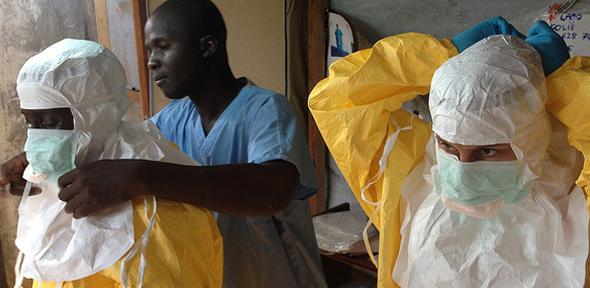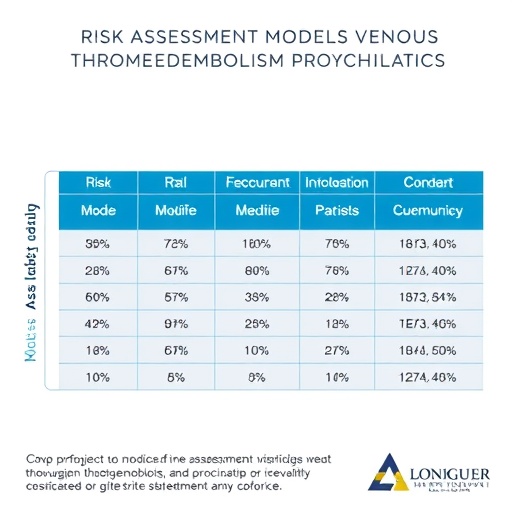
Potential outbreaks of diseases such as Ebola and Lassa fever may be more accurately predicted thanks to a new mathematical model developed by researchers at the University of Cambridge. This could in turn help inform public health messages to prevent outbreaks spreading more widely.
Many of the major new outbreaks of disease, particularly in Africa, are so-called zoonotic infections, diseases that are transmitted to humans from animals. The Ebola virus, for example, which recently killed over 11,000 people across Africa, was most likely transmitted to humans from fruit bats.
Modelling how outbreaks arise and whether they will take hold or quickly die out has proved challenging, with two factors in particular being difficult to quantify. The first is ‘spillover’, where the pathogen – a virus or parasite, for example – passes from an animal to a person. This can be through direct transmission, for example by being bitten or by eating ‘bush meat’ (wild animals such as fruit bats or monkeys that are caught and consumed), or indirectly, such as through contact with faeces or disease-carrying mosquitoes.
In many cases, a spillover will go no further. When a human is bitten by a rabid dog, they may become infected, but as the disease cannot transmit from human-to-human, the disease hits a dead end.
However, in some cases the infected person goes on to infect other humans. This is the case for diseases such as Ebola, Lassa fever (spread from rodents) and Crimean Congo haemorrhagic fever (spread from ticks). But in many cases, unless there are additional spillover events, the disease eventually fades out. This is referred to as a ‘stuttering chain’, and even though the disease is transmitted from human-to-human, they are still considered to be zoonotic infections.
Diseases such as HIV, however, which almost certainly began as a spillover from chimpanzees, are no longer considered to be zoonotic as the chain of transmission from humans to other humans is continuous and no longer relies on spillover to sustain transmission.
“Modelling spillovers is a real challenge,” says Dr Gianni Lo Iacono from the Department of Veterinary Medicine at the University of Cambridge. “We don’t have particularly good data on wildlife numbers, such as fruit bats in Sierra Leone, and only a crude idea of their geographic distribution and how many are infected. Even in the UK, we don’t really know how many deer we have, which would be really useful to estimate the risk of Lyme disease.”
In addition, measuring the likelihood of contact with the infected animals is also extremely difficult as it involves understanding human and animal behaviour.
Stuttering transmission, too, can be difficult to model, says Dr Lo Iacono. “In the case of Lassa fever, people who catch the disease from animals show the same symptoms as those who get it from humans. So is this case a spillover or part of a human-to-human chain of transmission? And if members of the same family get the disease, have they caught it from a family member or from the same pot of contaminated rice?
“Sometimes you can be lucky and work this out, as we did in a previous study, but this was possible because information of outbreaks that were known to be pure human-to-human chains was, unusually, available. But we need more general methods.”
Dr Lo Iacono and colleagues have developed the most coherent and potentially most accurate mathematical model to date for zoonotic diseases, which incorporates spillover and stuttering transmission.
“The pathogen does not care if it jumped from an animal or from another human; the only difference is that in a stuttering transmission an infected person can trigger other chains of human infections. A general, realistic model should capture this mechanism,” adds Dr Lo Iacono.
Details of the model, including a demonstration applying the framework to Lassa fever, are published today in the open access journal PLOS Neglected Tropical Diseases.
“By modelling potential outbreaks more accurately, we can help inform public health messages,” explains Professor James Wood, Head of the Department of Veterinary Medicine, and senior author. “If you know that most cases of an outbreak of Lassa fever come from spillovers, then the message might be ‘kill the rats’, but if it is now mainly spreading between humans, the messages will be around washing your hands or avoiding contact with bodily fluids.”
The beauty of the model, say the researchers, is that it is simple to implement, so public health officials and non-mathematicians could easily use it. It also allows for the incorporation of data from different disciplines, factoring in socioeconomic, ecological and environmental factors, for example.
“It’s important to understand if and how these other important factors can increase the impact of stuttering chains,” says Professor Wood. “Ebola has always been a very severe disease but previously confined to small, remote regions. Then suddenly, in the last two years it exploded in West Africa. Why? Was it because social patterns changed? Our model could be used to address such questions better.”
###
The research informing the paper was carried out as part of the Dynamic Drivers of Disease in Africa Consortium, which was funded by Ecosystem Services for Poverty Alleviation (ESPA).
Reference
Lo Iacono, G et al. A unified framework for the infection dynamics of zoonotic spillover and spread. PLOS NTD; 2 Sept 2016; DOI: 10.1371/journal.pntd.0004957
Media Contact
Stuart James Roberts
[email protected]
01-223-332-300
@Cambridge_Uni
http://www.cam.ac.uk
The post New model could help improve prediction of outbreaks of Ebola and Lassa fever appeared first on Scienmag.





